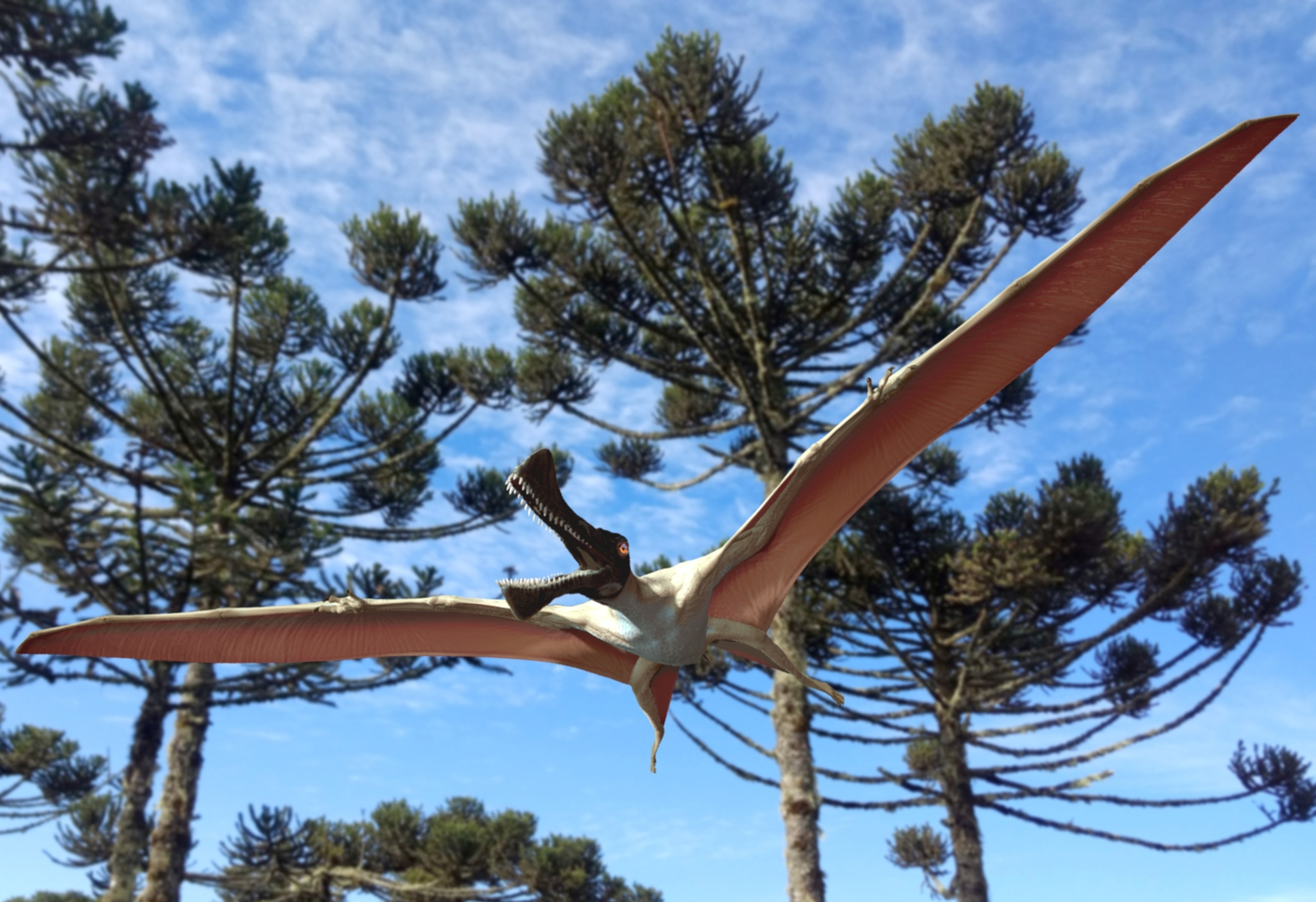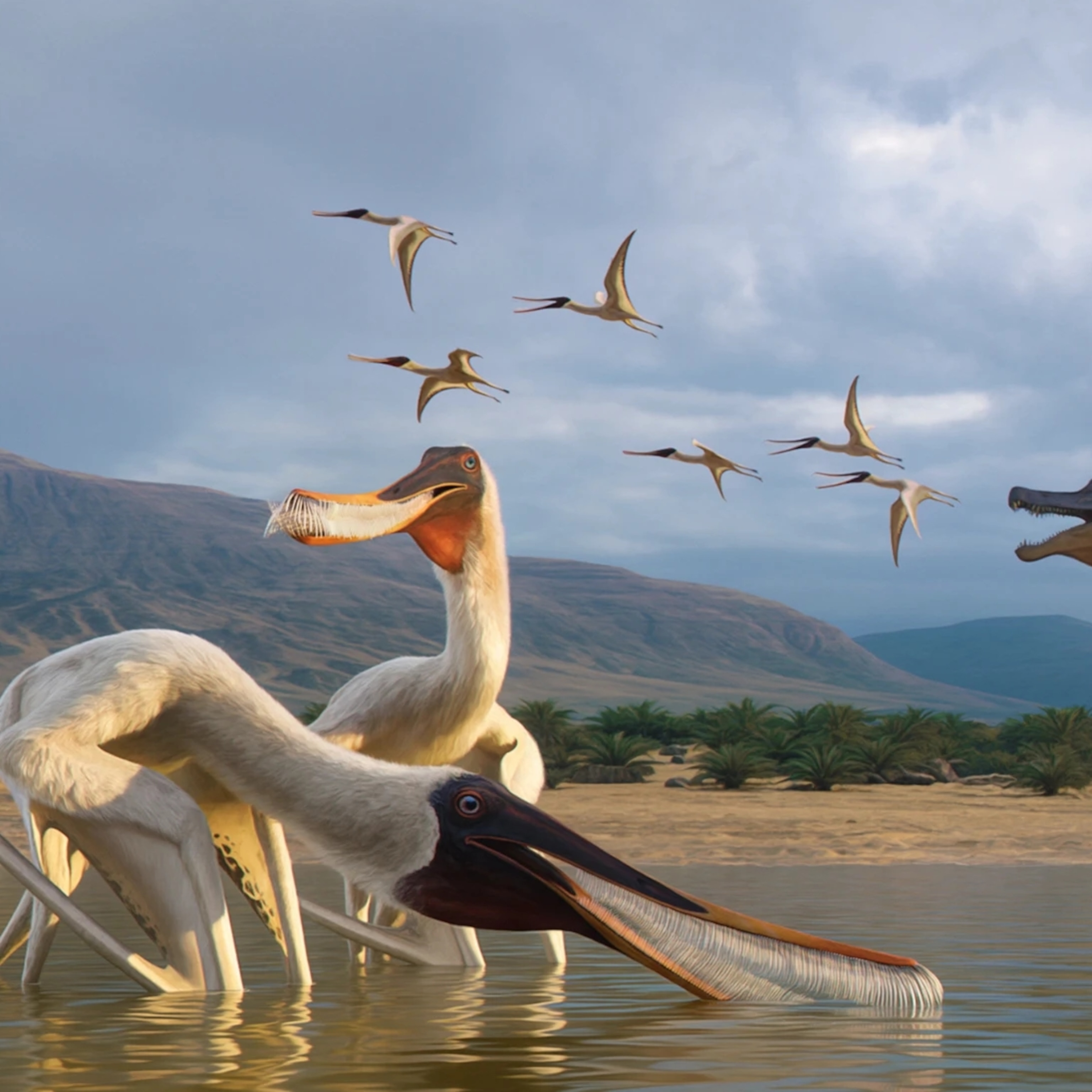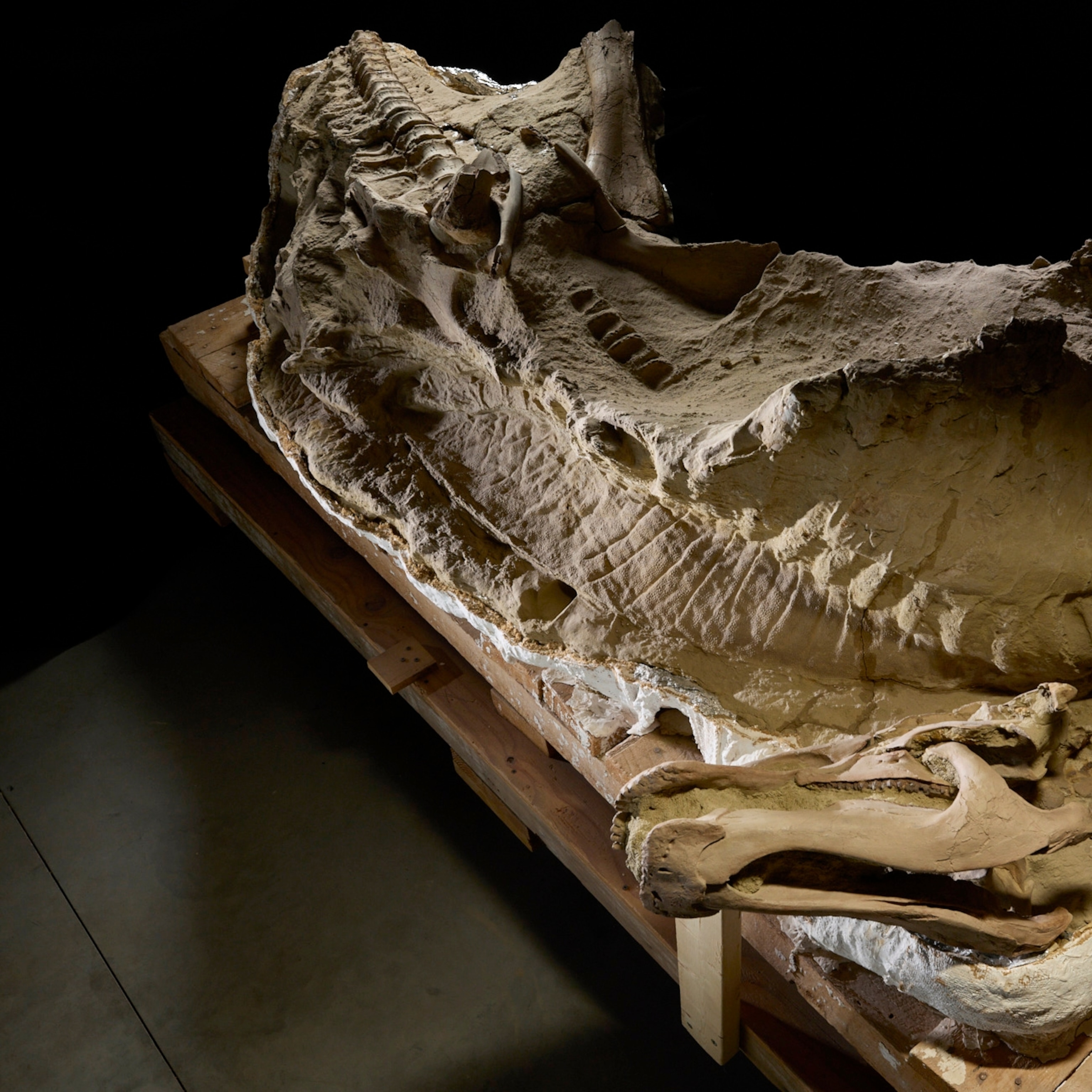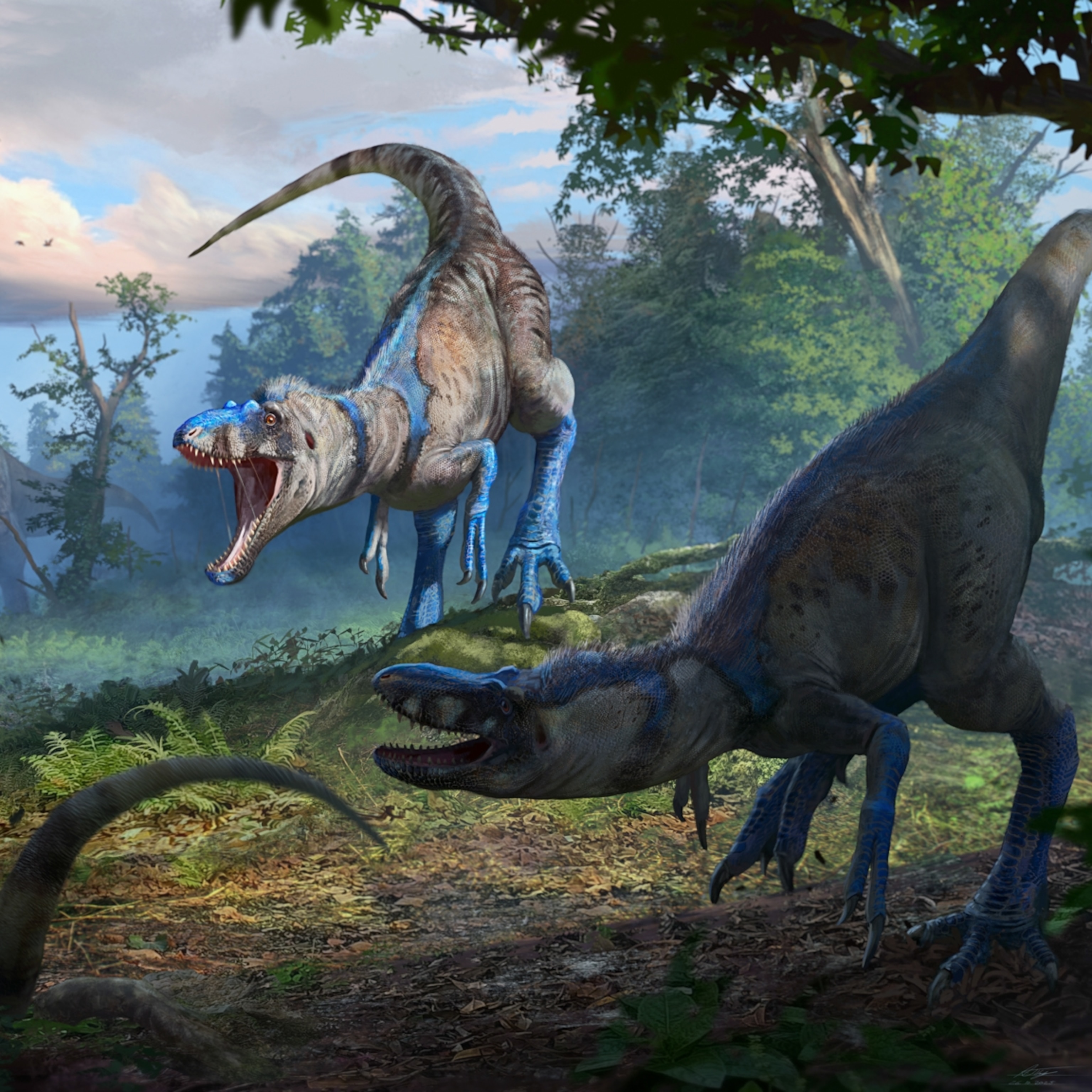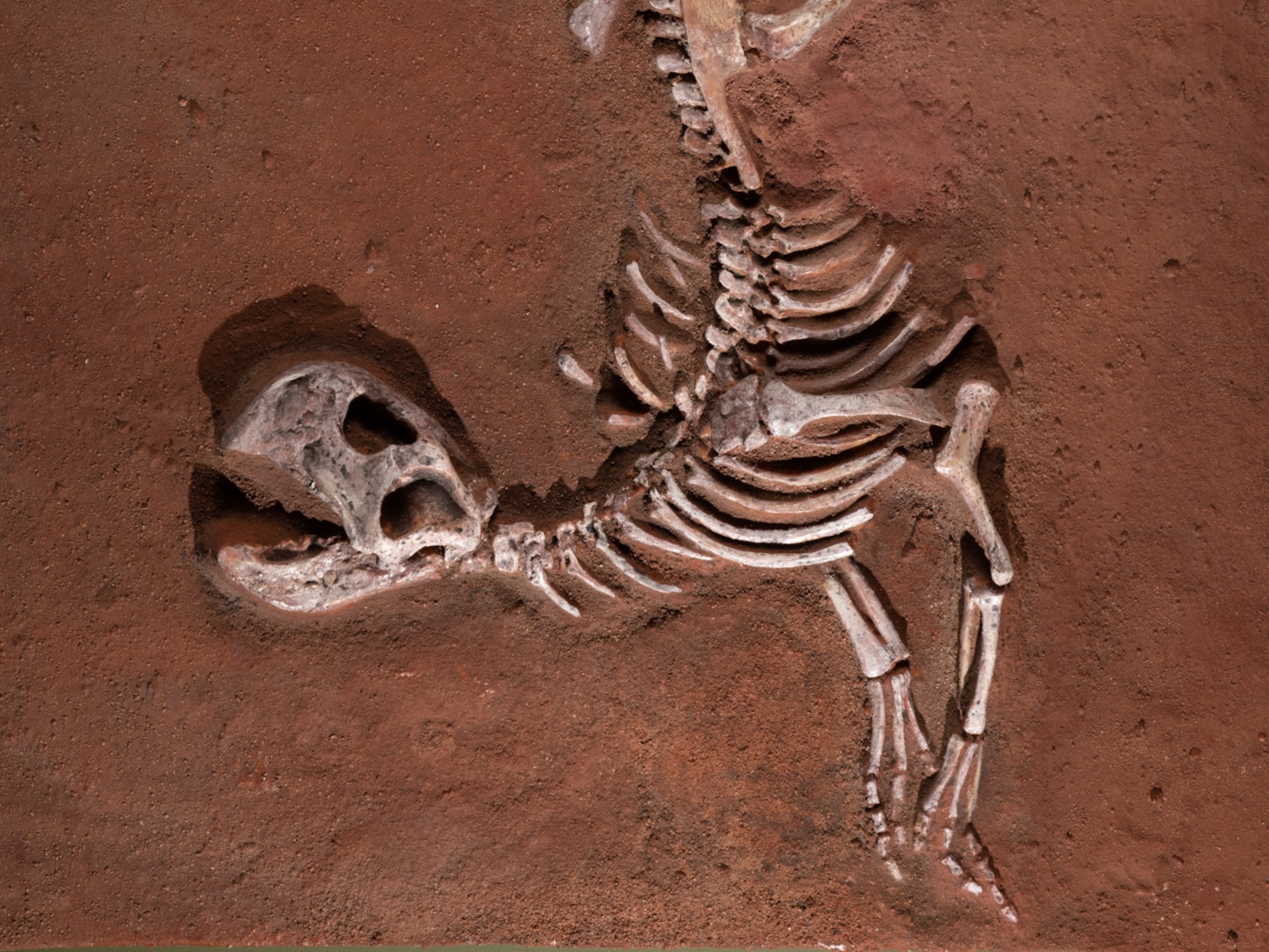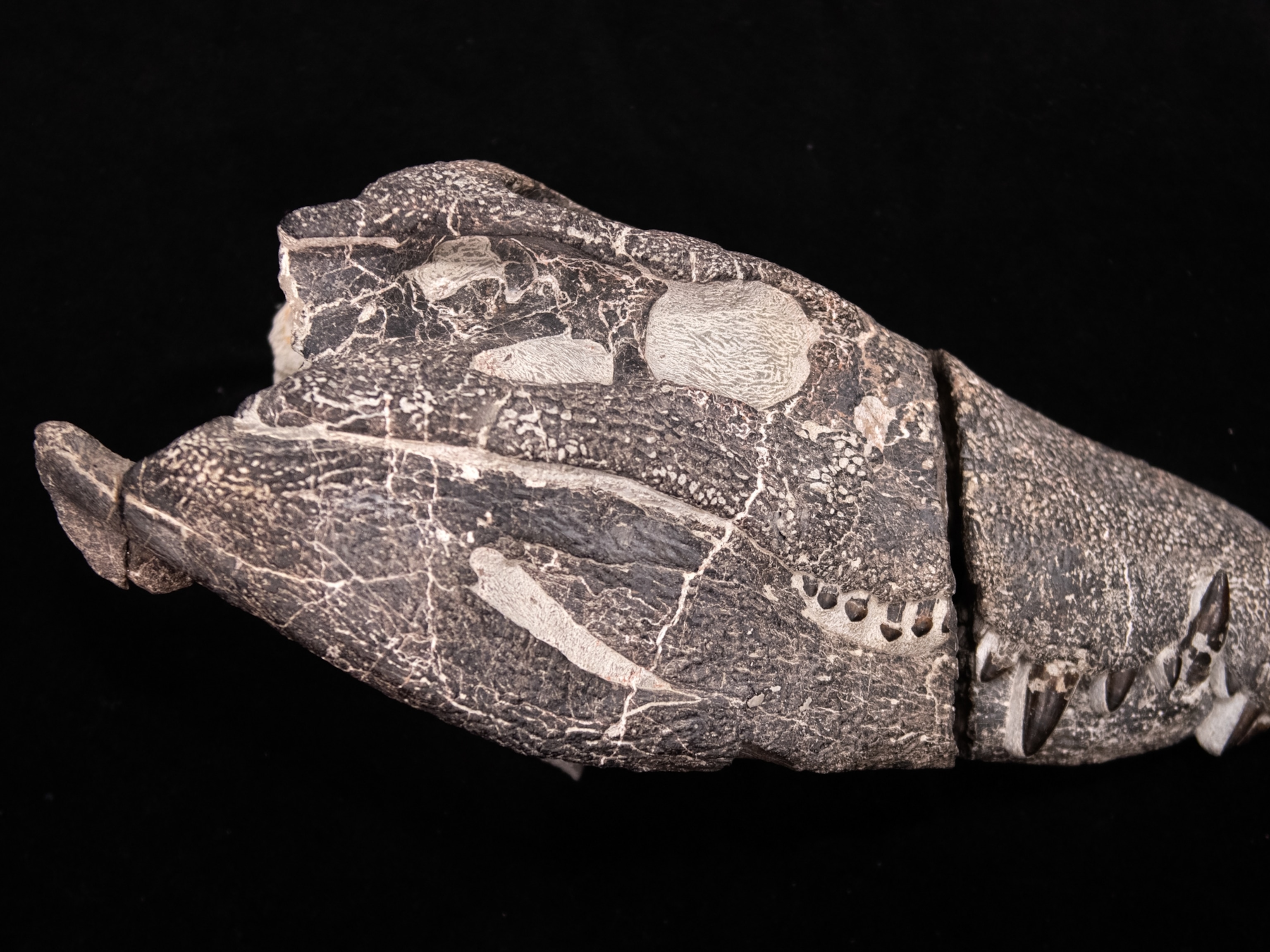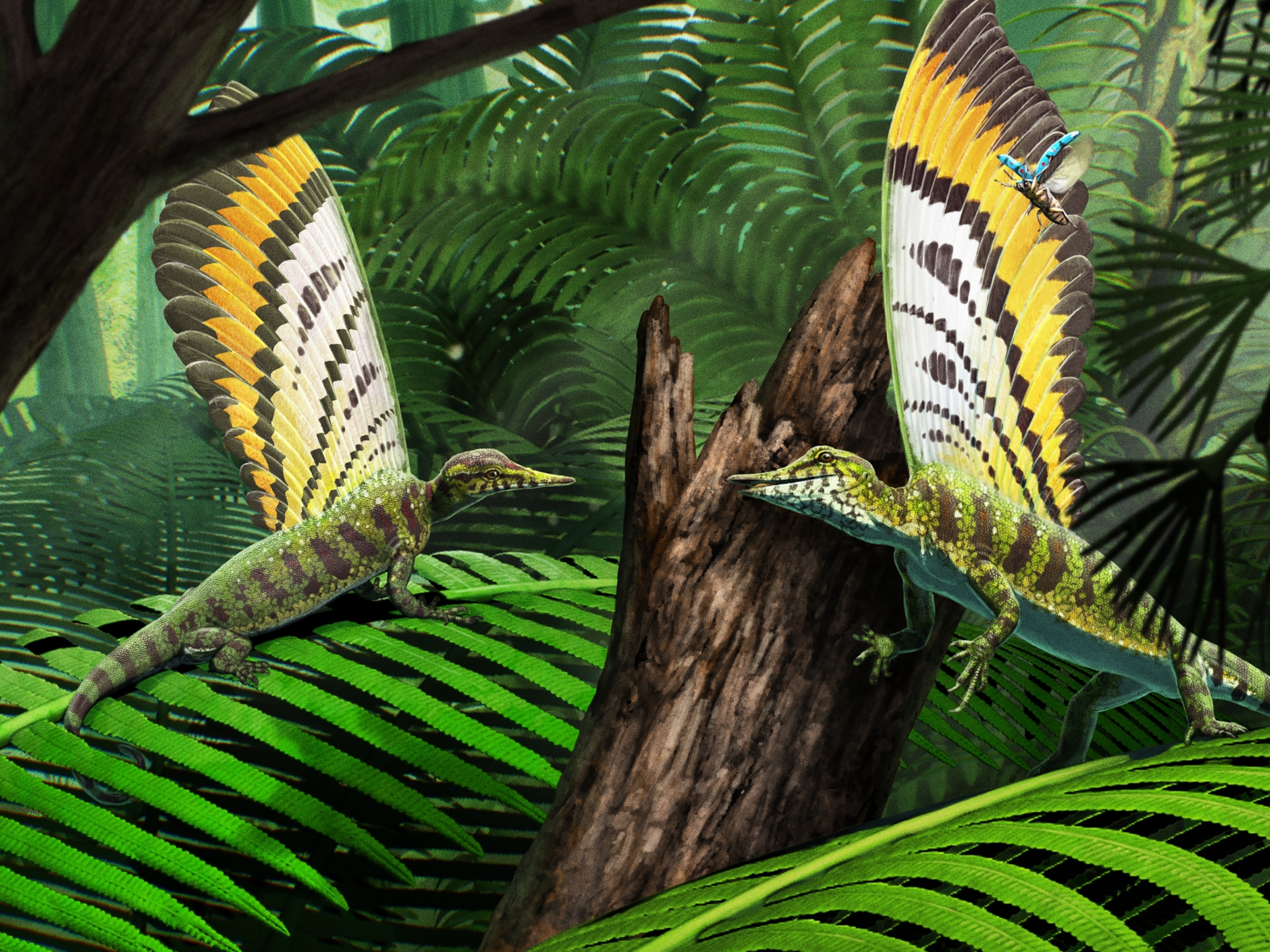One fall day in 2017, Bob Elliott had just finished spraying for weeds on Australia’s Belmont ranch when he noticed something unusual poking through the silty ground: a handful of mottled brown bones. The ranch, which Elliott co-owns and manages, previously yielded remains of the long-necked dinosaurs known as sauropods. But in comparison to bones from those living skyscrapers, the newfound fossils were downright small.
“He knew straightaway this was quite different ... and unlike anything that we’d seen before,” says Adele Pentland, a research associate with the Australian Age of Dinosaurs Natural History Museum in Winton, Queensland. Further study from Pentland and her colleagues confirmed that the fossil bones Elliott found came from a flying reptile known as a pterosaur—and that they represent the most complete set of pterosaur remains yet found in Australia.
Named Ferrodraco lentoni, the new fossil is far from a full skeleton; it includes parts of the upper and lower jaw, five partial neck bones, sections of both wings, and many teeth. But pterosaur finds in Australia are exceedingly rare, and these fossils are exceptionally well preserved.
“It’s really a substantial find,” says David Unwin, a paleontologist at the University of Leicester. “It’s filling in gaps in terms of our knowledge of their spatial distribution and also their distribution in time.”
Described today in Scientific Reports, the newly found pterosaur is roughly 96 million years old, based on previously reported ages of the rock formation thought to entomb the creature’s bones. Its closest relatives, pterosaurs of the group Anhangueria (an-hang-GWEHR-ee-ah), are thought to have died out by 94 million years ago.

Though its precise age remains uncertain, Ferrodraco joins a number of exciting new Australian discoveries from the age of dinosaurs, including the most complete dinosaur fossil preserved as opal.
“I think they’re on the verge of starting to find quite a lot more,” says Dave Hone, a paleontologist at Queen Mary University of London. “Australian dinosaurs are coming, and the pterosaurs are not too far behind.”
Reptiles of the sky
Pterosaurs soared over much of the world’s skies between 228 to 66 million years ago, and they could grow to tremendous size, some reaching wingspans of more than 30 feet. Ferrodraco was likely a bit more modest in size, with wings that spanned some 13 feet across. (Learn about a newly discovered "frozen dragon" pterosaur.)
To remain in the air, these fancy fliers’ bones had to be extremely lightweight and hollow, which means their delicate remains readily collapsed and crumbled under pressure. Because of this, astonishingly few have ever been found, and Australia in particular has largely remained a blank slate.
“You could put all the fossil material in a handbag,” Unwin says.
In Ferrodraco’s case, its remains were found in an iron-rich rock, the source of its remarkable preservation—and of its genus name, a combination of the Latin words for “iron” and “dragon.” Iron-rich fluids likely permeated the animal’s carcass after it died, which later formed a tough mineral that bolstered the fragile bones and preserved them in 3D, Pentland says. Such exceptional preservation could help researchers better understand pterosaur mechanics, such as how pterosaurs flew, Unwin adds.
The iron dragon
Researchers can distinguish Ferrodraco from its other anhanguerian pterosaur relatives because of its unique pattern of tooth sizes. While this may seem like a minor difference, it’s one of the few sources of meaningful variation commonly preserved across anhanguerian pterosaurs, which are often “ludicrously” similar to each other, Hone says. The similarity likely stems, in part, from the demanding biomechanical requirements of flight.
“If you’re going to fly, there’s kind of really only one way of doing it,” Hone says.
And like similar pterosaurs, Ferrodraco was probably a strong flier. Evidence of this can be found in its family ties, Pentland explains. Many of Australia’s terrestrial critters around this time, such as the long-necked sauropods, were more closely related to those found in South America. That isn’t the case for Ferrodraco; instead, it’s closer to pterosaurs found in modern-day England.
“If you’re a big lumbering dinosaur and you live in the U.K., it’s quite difficult to get to Australia,” Hone says. “Whereas if you’re an animal [that] can fly a few hundred miles in an afternoon, actually getting from the U.K. to Australia over a few hundred thousand years is not really a big surprise.”
Tantalizingly, Ferrodraco might be the latest surviving pterosaur of its kind yet found. Past work suggests that the formation in which the fossils were found is capped with a layer rich in animal fossils beginning some 94 million years ago. If the creature was enveloped within this layer, it could be as young as 90 million years old, Pentland says.
Its anhanguerian relatives are thought to have dwindled to extinction by 94 million years ago during a period of environmental unrest. Precisely why the others vanished remains unclear, though it may have had something to do with their diet. These creatures were avid pescatarians, but around that time, ocean temperatures rose and oxygen levels plummeted, causing many fish species to die off.
“Something went horribly wrong in the oceans,” Unwin says.
While Ferrodraco may be slightly younger than others of its group, Unwin emphasizes that the new species didn’t necessarily make it through this collapse. Pentland concedes that it’s too early to draw definitive conclusions, adding that the team hopes to test ages of the specific site that bore Ferrodraco’s bones.
For Pentland, Ferrodraco’s discovery holds even greater meaning. The Australian Age of Dinosaurs Natural History Museum, where the specimen will be displayed, draws people to the town of Winton from around the world. This latest find will no doubt bring more visitors.
“To be able to do this for this town,” she says, “and be able to help the community with whatever specific contribution I can make, it’s a huge honor.”
